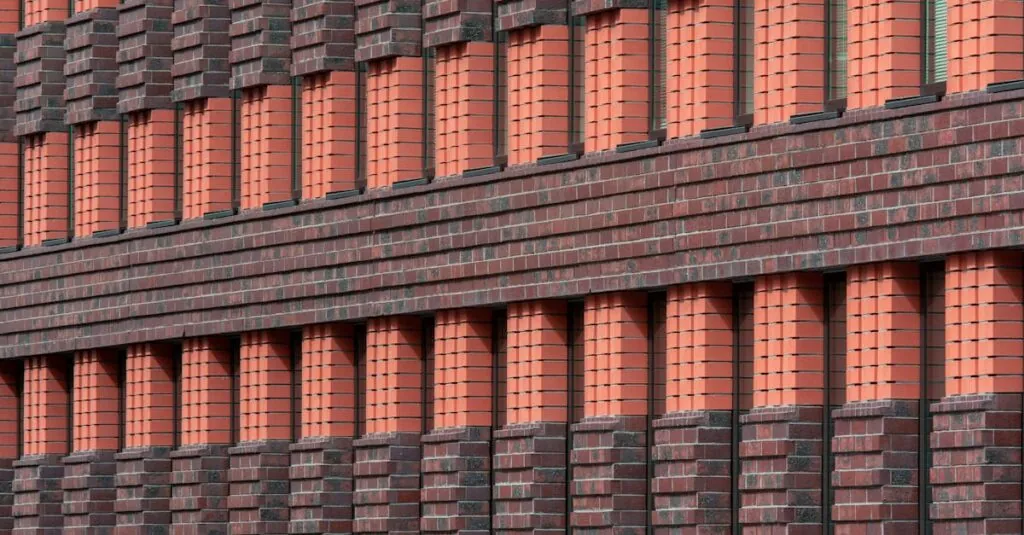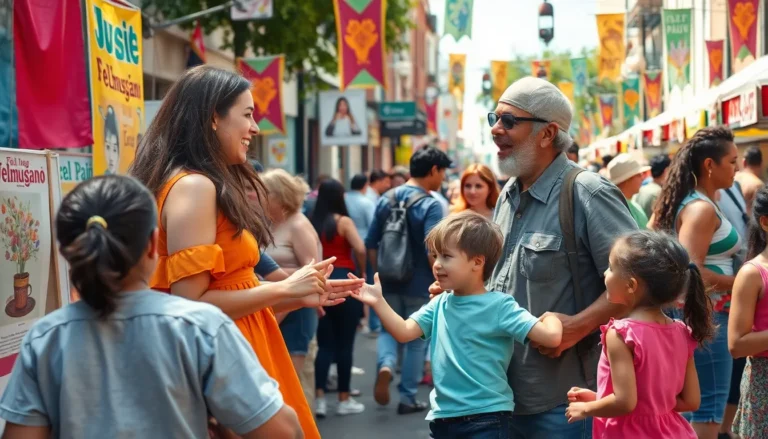In a world where fashion trends come and go faster than a speeding bullet, style sequence building emerges as the superhero we didn’t know we needed. Imagine effortlessly piecing together outfits that not only look fabulous but also tell a story. It’s like creating a wardrobe playlist where each item is a catchy tune, harmonizing perfectly with the next.
Table of Contents
ToggleWhat Is Style Sequence Building?
Style sequence building refers to the intentional process of creating outfits that reflect a cohesive and harmonious aesthetic. This method allows individuals to curate their wardrobe with pieces that not only align visually, but also narrate a story or theme. Fashion choices become an expression of personal style, connecting various clothing items in a meaningful way.
Each outfit represents a carefully selected combination of textures, colors, and silhouettes. This selection process encourages creativity, empowering individuals to explore different styles while maintaining a unified look. Building a style sequence requires thoughtful consideration of how each garment interacts with the others, resulting in an aesthetically pleasing ensemble.
The approach emphasizes versatility, as pieces can transition seamlessly from one look to another. By prioritizing foundational items, individuals enhance their wardrobe’s functionality, making it easier to create multiple outfits. Establishing a style sequence also helps streamline decision-making, reducing the time spent choosing daily outfits.
Effective style sequence building incorporates seasonal trends as well as timeless classics. For example, pairing a statement jacket with basic tees offers a stylish and adaptable outfit option. Mixing prints or layering can also enhance visual interest while adhering to the overarching theme of the sequence.
In practice, individuals might start with a signature piece, such as a bold dress or tailored pants, then build around it with complementary accessories and footwear. Linking different components of an outfit cultivates a polished appearance, reflecting individuality and sophistication.
Importance Of Style Sequence Building
Style sequence building plays a crucial role in creating fashion choices that resonate. Its significance lies in the art of curating cohesive outfits that tell a story through carefully chosen pieces.
Enhancing User Experience
Engaging with a well-structured wardrobe improves the overall experience of styling. Users enjoy the ease of mixing and matching items that complement one another. When outfits are thoughtfully arranged, individuals feel more confident in their appearances. A clear aesthetic enhances the fashion journey, allowing for creativity while ensuring practicality. Shoppers are more likely to embrace styles that reflect both personal taste and current trends. Increased confidence results from knowing one’s wardrobe holds versatile and harmonious options.
Streamlining Design Process
Prioritizing style sequence building streamlines the design process significantly. Designers benefit from a focused approach that emphasizes cohesive themes and narratives. By concentrating on select pieces, they minimize distractions and improve productivity. This method encourages the development of versatile looks, altering individual pieces for various contexts. Designing with a sequence in mind fosters creativity while retaining a unified vision. The clear framework aids in making decisions regarding color palettes, textures, and silhouettes, enhancing overall efficiency and effectiveness in the design process.
Key Concepts In Style Sequence Building
Style sequence building involves several critical elements that together create cohesive and visually appealing outfits. Understanding these elements enhances the overall fashion experience.
Color Palettes
Color palettes play a fundamental role in style sequence building. Selecting a harmonious set of colors unifies outfits, making them visually appealing. Individuals might start by choosing a primary color, then incorporate complementary tones or shades for balance. Cool colors such as blues and greens often evoke calmness, while warm colors like reds and yellows can create energy. Coordinating colors enhances the ability to mix and match items, maximizing versatility within the wardrobe.
Typography
Typography, although primarily associated with graphic design, influences fashion by conveying style through text. Designers often utilize fonts and text on clothing to reflect brand identity and thematic elements. Choices in typography, such as bold or elegant fonts, impact the mood of an outfit. Moreover, integrating typography into fashion narratives allows individuals to express messages or aesthetics through their clothing selections. Effective typography enriches the overall style sequence by adding a layer of meaning.
Layouts
Layouts in fashion emphasize the arrangement of clothing items within an ensemble. Strategic layering creates depth and interest, showcasing various textures and shapes. Individuals can experiment with silhouettes by combining structured pieces with softer items. Additionally, layering can adjust outfits for different occasions or seasons. By maximizing the potential of layouts, people enhance their visual storytelling, ensuring each outfit communicates a cohesive narrative.
Best Practices For Implementing Style Sequence Building
Establishing a color palette stands as a prime practice in style sequence building. Selecting a harmonious set of colors brings unity to outfits, enhancing their visual appeal. Incorporating foundational items serves to maximize versatility within the wardrobe. Prioritizing these staples allows for efficient mixing and matching, leading to quicker outfit decisions.
Using statement pieces adds a focal point within an outfit. This approach complements simpler garments, creating a balanced aesthetic. Combining textures enriches the overall appearance, drawing attention to unique elements. Layering different fabrics can create depth, providing visual interest.
Building a sequence around a signature item helps to develop personal style. Tailoring accessories around this focal piece elevates its impact. Incorporating seasonal trends keeps the wardrobe fresh, while timeless classics provide stability. Adapting these elements ensures fashionable yet functional combinations are readily available.
Documenting outfit combinations in a style diary enhances creativity. This practice allows individuals to track successful ensembles while experimenting with new ideas. Visual organization aids in cultivating a cohesive wardrobe narrative, amplifying storytelling through fashion.
Engaging with social media platforms goes a long way in finding inspiration. Following fashion influencers and joining style communities fosters an exchange of ideas. Seeking feedback from peers further sharpens individual taste, refining sense in style sequence building.
Experimenting with print mixing encourages bold choices. Balancing patterns with solid colors creates harmony within an ensemble. Understanding the importance of fit enhances overall presentation, ensuring garments flatter the body. Each step taken toward effective style sequence building contributes to a polished appearance that reflects individuality and confidence.
Style sequence building transforms the way individuals approach their wardrobes. By focusing on cohesive outfits that tell a story, it encourages creativity and self-expression. This method not only enhances the versatility of clothing but also simplifies daily outfit choices, allowing for a more efficient and enjoyable dressing experience.
Embracing foundational items and statement pieces ensures a polished look that reflects personal style. Engaging with the process of documenting outfits and seeking inspiration fosters a deeper connection to fashion. Ultimately, style sequence building empowers individuals to confidently curate their unique aesthetic while navigating the ever-evolving landscape of fashion.




